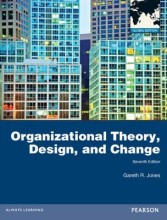Article The Age of Continuous Connection - harness customer networks
7 important questions on Article The Age of Continuous Connection - harness customer networks
The Customer Network Paradigm
Before digitalization:
The mass-market model= was used in firms with Mass production and Mass communication.
- Customers are passive and are considered in aggregate
- Their only significant role is to either purchase or not purchase
- Companies seek to identify the product or service that will suit the needs of as many potential customers as possible
- Success hinges on efficiencies of scale
The marketing funnel (or purchase funnel) =
one framework for understanding how customer networks have such great impact on businesses’ relationships to customers.
The marketing funnel is based on “hierarchy of effects” and maps out the progression of a
potential customer:
1. Awareness: (knowledge of product/company)
2. Consideration: (recognition of potential value)
3. Preference: (choice of a referred company/product)
4. Action: purchase of a product, subscription to a
service
5. Loyalty: it is more efficient to retain customers than to attempt acquiring new ones.
With each step the number of potential customers decreases.
- Higher grades + faster learning
- Never study anything twice
- 100% sure, 100% understanding
In the digital area:
Customers are also influenced by customer networks at different stages of the funnel
- Advocacy = advocating for the brand and connecting the brand
to people in their network.
- Awareness: search engine results, blogs.
- Consideration: customer reviews influence the evaluation of different brands.
- Brand preference: social networks like Facebook or asking friends
- Action: purchasing from a retail business in store, on website, on
mobile device, or even on a mobile device while in a store.
- Loyalty: “friending” via e-mail marketing, FB, Twitter.
Whereas the funnel is a macro tool for thinking very broadly about customers’ psychological states, the path to purchase is a lens for looking at customer behaviors much more specifically.
An access strategy may therefore take a variety of approaches, namely:
- Mobile commerce: E.g., using QR codes as tickets to board planes and trains; room doors that guests can unlock through swiping on smartphones; etc.
- Omni-channelled experiences: E.g., Walmart using an app that has different features for when used at home versus while in a Walmart store.
- Working in the cloud: customers are becoming accustomed to paying for products that reside entirely in the cloud (e.g., Spotify instead of MP3s).
- On-demand services: services that used to require the customer to be in a specific location are now accessible to customers anywhere at any time (banking)
Tool: The Customer Network Strategy Generator
The Customer Network Strategy Generator is designed to help develop new strategic ideas for engaging and creating value with networked customers.
The Customer Network Strategy Generator
Step 3: Strategy Selection
Look at the 5 core customer network behaviours and their broad strategies that derive from them:
- Access: Be faster, be easier, be everywhere, and be always on for your customers.
- Engage: Become a source of valued content for your customers.
- Customize: Make your offering adaptable to your customers’ needs.
- Connect: Become a part of your customers’ conversations.
- Collaborate: Invite your customers to help build your enterprise.
Although all five strategies can be valuable for your business in the abstract, you are now looking to generate ideas for a specific project.
The question on the page originate from the summary of the following study material:
- A unique study and practice tool
- Never study anything twice again
- Get the grades you hope for
- 100% sure, 100% understanding






























